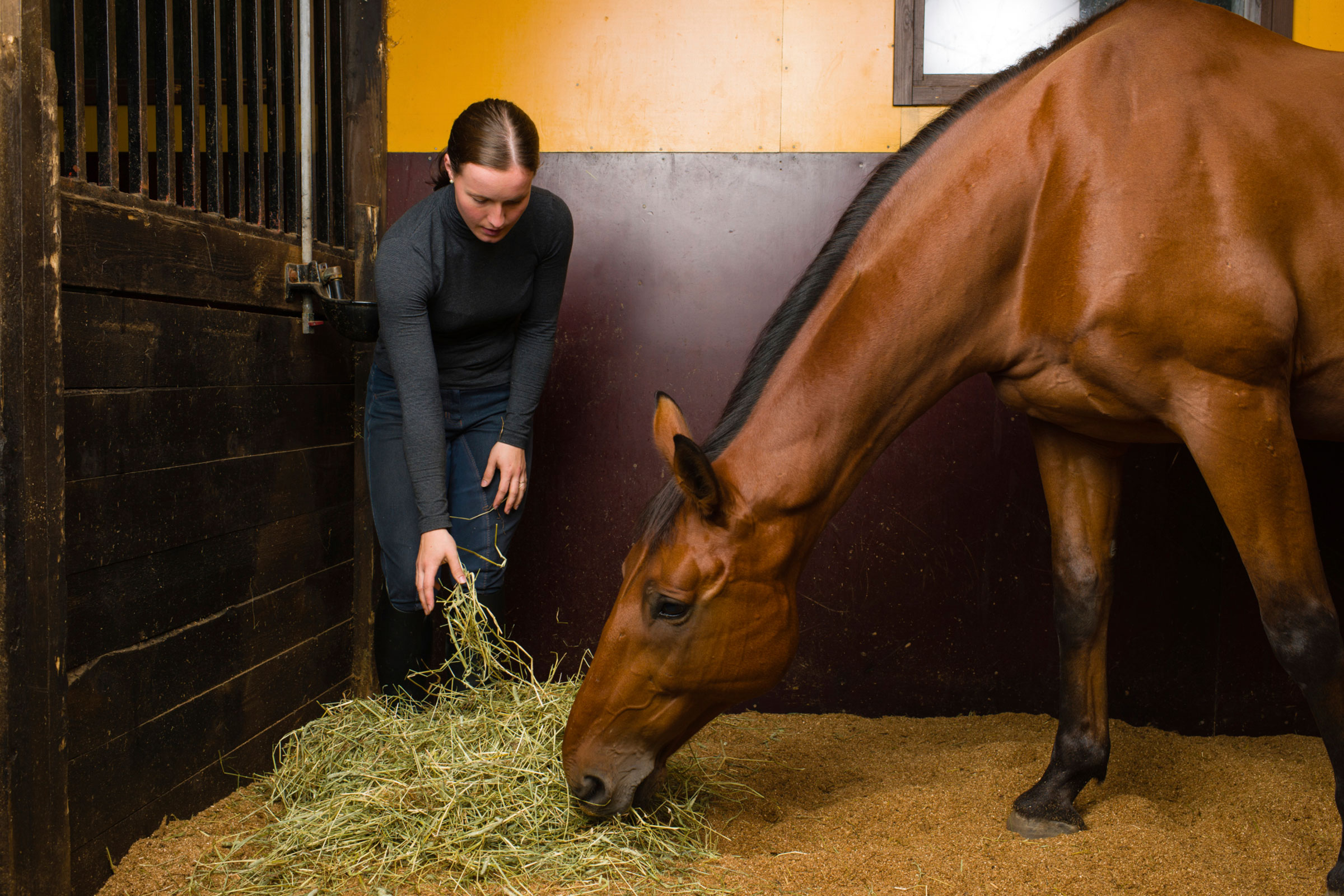
Minimal particle exposure in equine airways is critical for respiratory health.
Hay Dust
A study compared three different feed sources fed to 60 Thoroughbred racehorses: a) good-quality hay; b) steamed hay; and c) haylage. The objective was to identify which forage had the lowest dust levels in order to decrease a horse’s exposure to respirable dust.
The study revealed that haylage is a lesser source of dust than steamed hay, which has less dust than good-quality hay. Not only does feeding low-dust forage decrease exposure of the airways to offending particles that cause inflammation, but it results in improved airway health and performance.
Barn Dust
Another study looked at the effect of nebulization on air quality within a barn with the theory that water vapor might aggregate dust particles in the air to decrease horse exposure to these particles.
Four barns with six stalls each were included in the study—some stalls had high dust levels; some had low dust levels. A nebulizer was set up to run 24 x 7 and measurements were taken eight hours per day.
High-dust stalls developed nearly 14 times greater concentrations of fungi and 37% more dust than was found in low-dust stalls. However, the water nebulizer had no effect on air quality.



